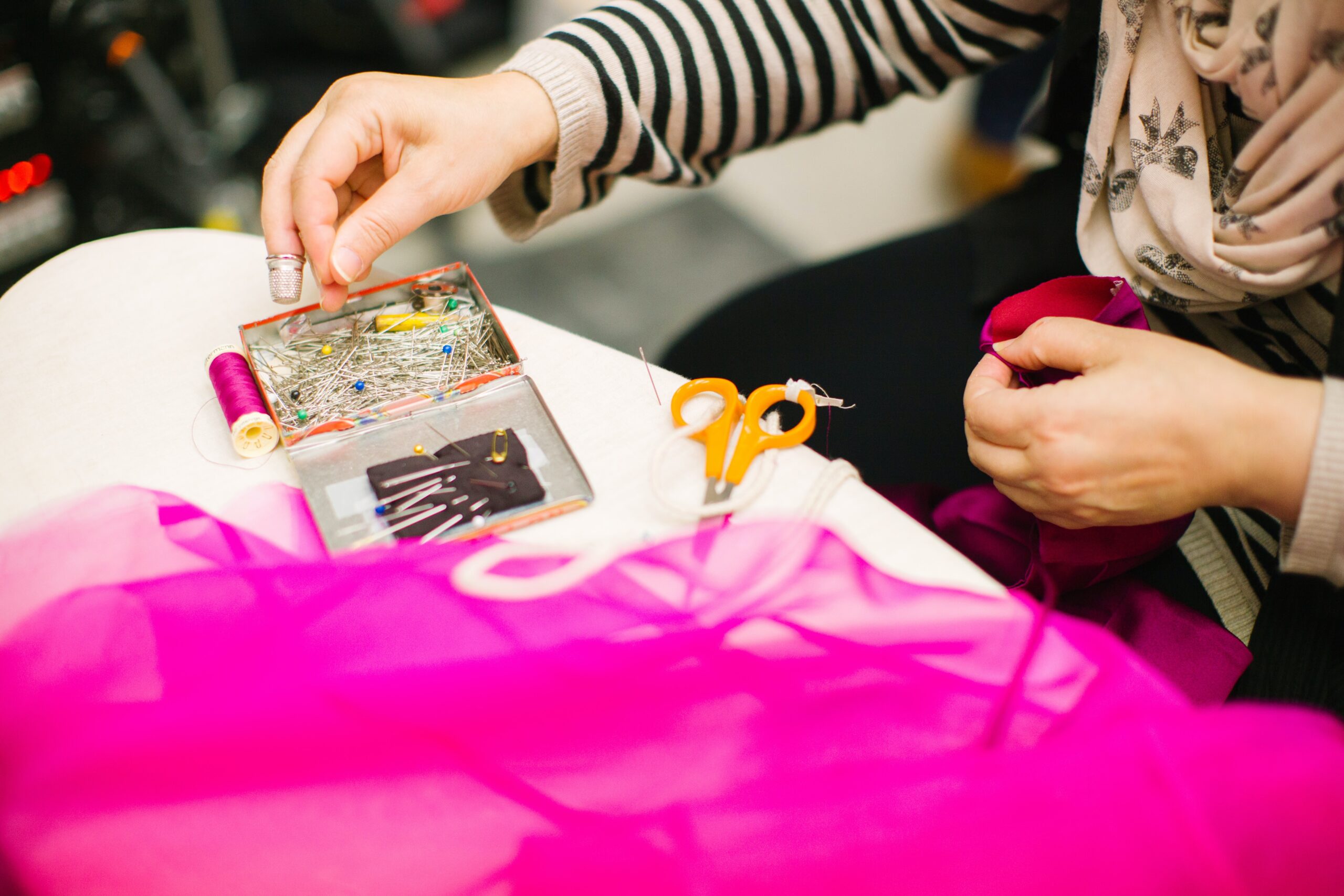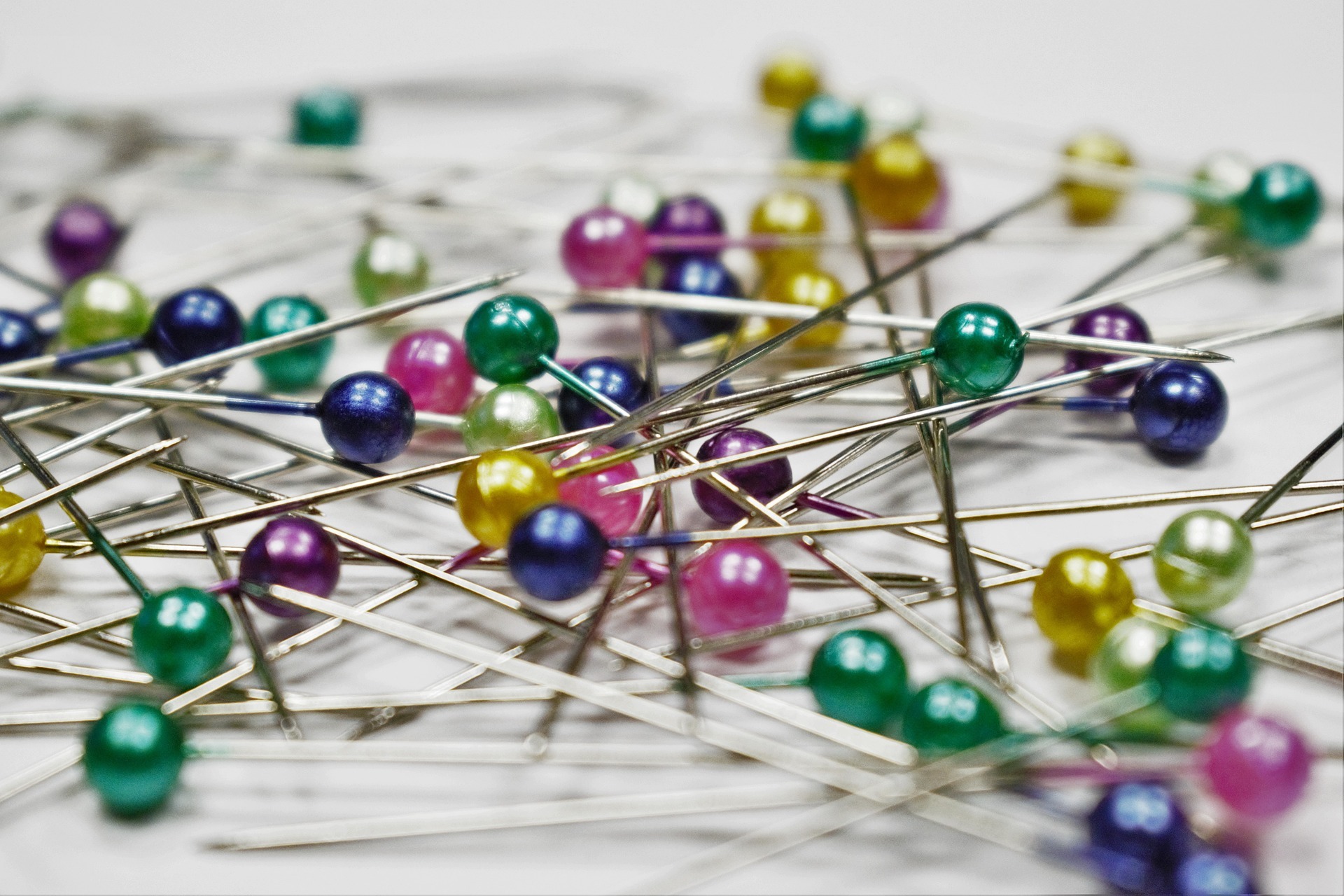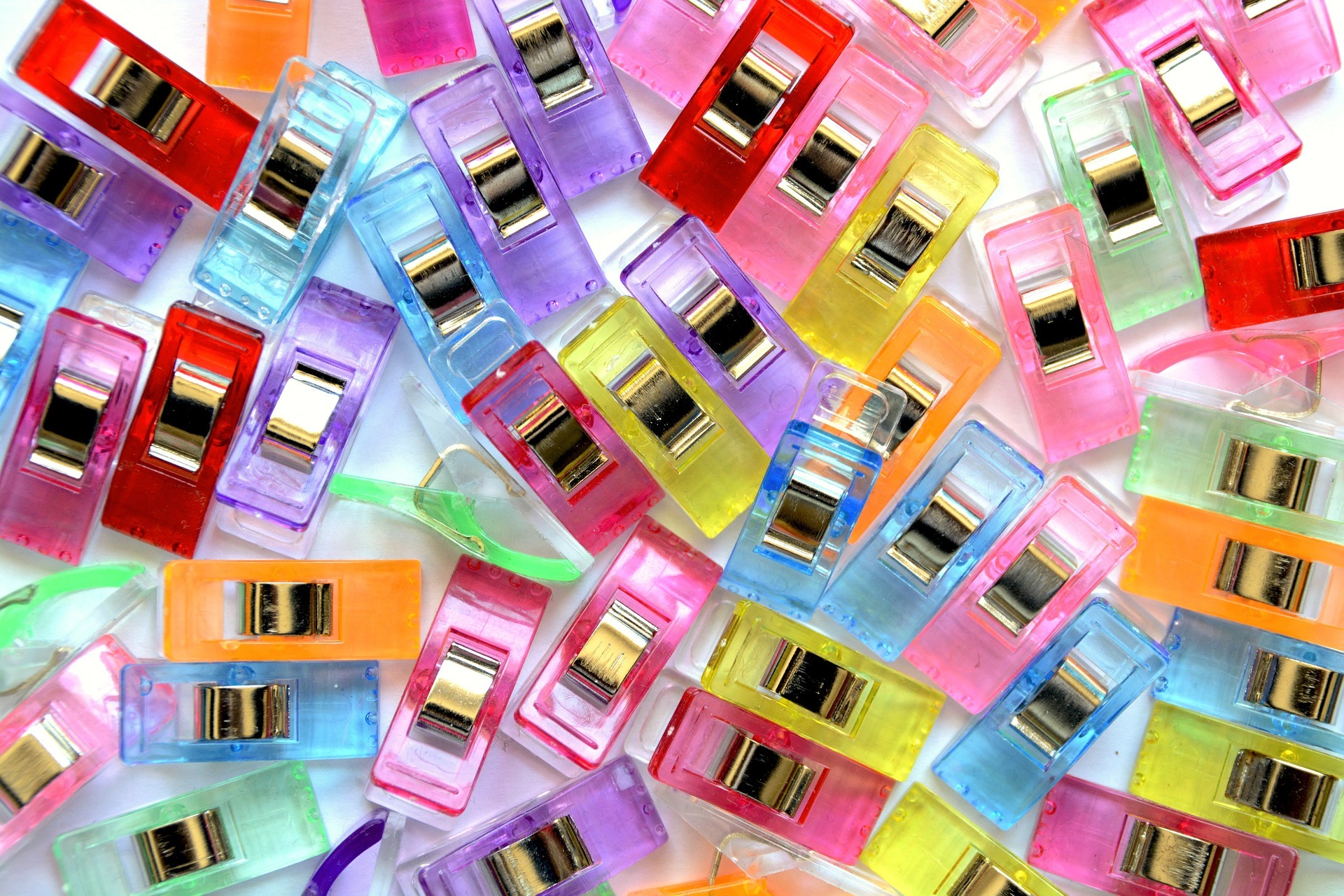The art of sewing or mending fabrics together has been around for ages, alongside with sewing pins and needles. These materials have been an essential supply used by sewists and sewing enthusiasts. Sewing pins hold the fabric together at the seamline before sewing. They temporarily keep the material in place while cutting, attaching patterns, sewing, or pressing.
Sewing pins come in various thicknesses and lengths, with different pinheads, materials, and tips – each with a specific purpose. Here are six (6) different types of sewing pins:
1. Ball-point pins: These are mainly used when working with jersey fabrics and sewing with stretch knits, as the rounded point can slip between the threads without breaking them. These pins have nickel-plated 0.5 mm metal shafts and are as sturdy and rigid as glass head ones.
2. Quilting pins: Because quilting involves multiple layers of fabric, pins that are sturdy and long enough to work through all of the layers of a quilt are recommended. Quilts are typically manufactured from thick cotton; your fabric should be able to withstand the weight of this type of pins.
3. Glass-head pins: This pin is the most frequently used among sewists. They’re made of nickel-plated steel and are strong but not particularly flexible. The 1⅜” length of the pin is also just the perfect size. It would be too bendy if it were any longer, and it would be difficult to pierce through thick layers of wool or other heavyweight clothing materials if it were any shorter.
4. Silk pins: Also known as “dressmaking pins” or “satin pins”. Traditional silk pins are made entirely of metal, with no plastic or glass balls. They come in various weights to match the shaft size and thickness needed for your fabric.
5. T-pins: T-pins are 1½” long and are entirely composed of nickel-plated steel. They help hold down upholstery materials or for those rare craft projects that require ironing.
6. Plastic head pins: If you’re working with a material like felt, you could use plastic head craft pins. They typically have large multi-colored plastic ends, occasionally in novelty shapes such as flowers and hearts. They don’t have to be of the highest quality, and they’re a wonderful way to complete out your pin collection.
With sewing pins taking part in the art of sewing as a time-tested standard, many people have begun to swerve into the new invention that’s supposed to make holding fabric together easier- sewing clips. It resembles little plastic hair clips; however, it features a flat grasp rather than an interlocking grip to keep a few fabric layers in place. These clips are brightly colored plastic clamps that is composed of three parts:
1. A lower plastic flat piece
2. An upper plastic bent portion
3. A metal tension spring
They’re excellent for holding numerous layers of fabric together and working with different materials. Although they were initially created to assist quilters with basting, sewists quickly realized that they work well for a wide range of crafts, including bag-making, dressmaking, and more. Furthermore, they are preferred by some people over pins when working with vinyl, leather, silk, and other fabrics where pin holes are unwanted.
Here are some of the advantages of sewing clips:
1. Easy to use; clips are less challenging to insert and remove than pins and they do not bend. For persons with poor vision or wrist difficulties, the clip’s bigger size makes them easier to see and work with.
2. Great for working with various fabrics; these clips work well on slippery or heavy materials, as well as fabrics where you don’t want to risk cutting holes, such as vinyl and leather.
3. No damaged patterns; they have a firm hold but will not tear or penetrate your patterns and designs, making them ideal for holding the patterns on the fold.
4. Safer than pins; you don’t have to be concerned about being pricked with pins or stepping onto them. They’re also too large to be a choking hazard, so they’re safer around children.
5. Stronger hold; pins might become loose and cause your fabric to shift out of position. Meanwhile, the material will neither slip or be distorted with the presence of this clips. They also keep numerous layers of cloth together while seaming or binding.
Regardless of how much sewing clips have a lot of good things to offer than pins, some people still prefer using sewing pins because of the reasons listed below:
1. Can’t be sewn or ironed over. Clips are plastic and clunky; you cannot sew or iron straight over them without ruining your iron, fabric, or sewing machine.
2. Limited fabric area to use them. Sewing clips are intended to be used around hems and cloth edges. They cannot be placed in the center of your project as pins may.
3. Leaves a mark on fabrics. Clips will not cause holes in the cloth, although they may leave indentations that may be troublesome to get rid of depending on the fabric material.
4. Adds weight to the project. Their big size improves visibility and works well with thick clothes. However, they are bulky and add weight to your project; they also demand more storage space. Clips can add extra weight and make fabric manipulation difficult when working with lightweight and delicate textiles.
Conclusion:
Sewing enthusiasts or sewists often ponder whether using pins or sewing clips would be better than one another. However, they may need to realize that sewing clips and sewing pins are both utilized in the sewing process, but each has distinct advantages that make them better suited for certain jobs than others. It is best to keep in mind that light fabrics work best with thin pins, whereas thicker fabrics work best with hefty pins.



